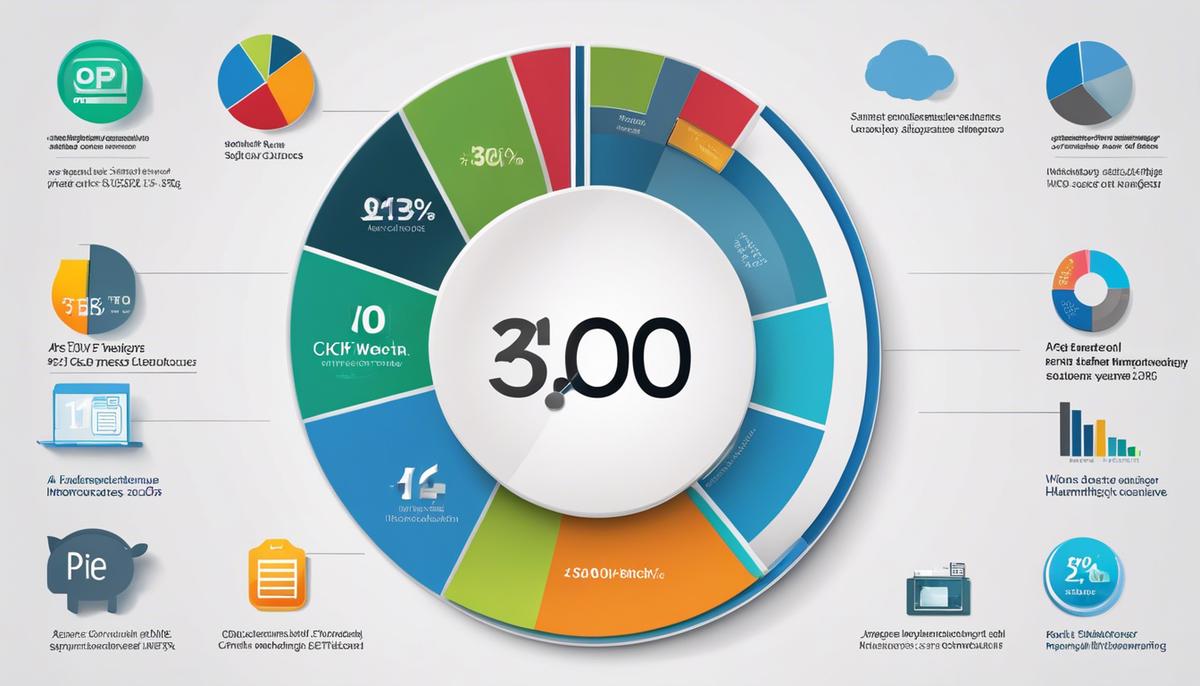Diversifying your portfolio with high dividend tech stocks.
In the fast-paced realm of technology, dividends may not be the first feature that springs to mind for investors accustomed to associating tech stocks with exponential growth and reinvestment strategies. Yet, amidst the cutting-edge innovations and fluctuating market values, a subset of tech companies offer a surprising boon: high dividend yields that promise steady income streams. This essay delves into the intricacies of dividend yields, specifically within the technology sector, to illuminate how shrewd investments in tech can lead to both capital appreciation and regular dividend payouts. From understanding the strategic shift that leads a tech firm to distribute profits, to pinpointing the financial indicators of a strong dividend-paying company, investors will gain a comprehensive understanding of how dividends can play a pivotal role in their tech investment endeavors.
Understanding Dividend Yields in Tech
Dividend Yields: A Significant Factor for Tech Investors
In the rapidly evolving world of technology investments, dividend yields stand out as a key consideration for investors. Tech companies that offer dividends typically signal a level of financial stability and confidence in their business model. Unlike startups and high-growth tech firms that reinvest earnings back into the company to fuel expansion, established tech entities use dividends to return value to shareholders. This creates a passive income stream, which is particularly appealing in volatile market conditions where share price appreciation is not guaranteed.
For tech investors, the appeal of dividend yields extends beyond the immediate cash flow. They serve as a barometer for a company’s fiscal health and future prospects. Tech firms with strong free cash flow can distribute regular dividends without compromising on research and development—this balance is pivotal in an industry driven by innovation. Dividend yields also provide a measure of protection against market downturns; when stock prices drop, the dividend yield effectively rises if dividends are maintained, cushioning the stock’s total return. Thus, savvy investors recognize dividend yields as a component in a comprehensive investment strategy within the tech sector—a sector traditionally associated with growth, but equally capable of providing consistent income through dividends.

Evaluating Tech Companies for Dividend Investing
Understanding the Balance Sheet: Deciphering Dividends in Tech Stocks
When evaluating tech companies for dividend potential, investors should divert their attention to the balance sheet — a veritable treasure map showcasing a company’s financial health. A solid balance sheet with ample cash reserves points to a company’s prowess in sustaining dividends over time. Discerning investors pore over the debt-to-equity ratio, as a lower ratio often correlates with a company’s greater flexibility in returning profits to shareholders. Tech giants that manage to keep this ratio in check often emerge as reliable dividend payers. It’s crucial, nonetheless, to place this figure in the proper context of the sector’s norms, as tech industries might display diverse capital structures.
Perspective on Payout Ratios: Profits Turned into Paychecks
One’s gaze should also skim towards the payout ratio, the portion of earnings returned to shareholders as dividends. A moderate payout ratio, typically below 60%, can indicate a company’s balance between rewarding shareholders and reinvestment for future growth. However, discernment is key, as tech firms vary; a maturing software conglomerate’s payout strategy may differ greatly from a dynamic semiconductor start-up’s. A strategic analysis recognizes those companies adept at maneuvering through market whims while still holding a commitment to consistent dividend payouts. Ultimately, the pursuit for dividends in tech isn’t about chasing the highest yield immediately, but rather the sustainable and growing potential over time.
 Tech Sectors with High Dividend Potential
Tech Sectors with High Dividend Potential
Exploring High Dividend Potential in Tech Sectors
Within the technology sector, certain industries stand out for their particularly high dividend potential. One such example is the semiconductor industry. Semiconductors are the cornerstone of modern electronics, a necessity for the production of computers, smartphones, and a myriad of other devices. Companies in this space, like Qualcomm and Texas Instruments, often have robust free cash flows and more mature business models, allowing them to pay substantial and consistent dividends to shareholders.
Telecommunication firms are also recognized for their impressive yield offerings, attributable to the essential nature of their services. As carriers of data and providers of internet services, companies such as Verizon and AT&T maintain steady revenue streams that can support dividend payments even in tough economic climates. These corporations typically possess extensive infrastructure and a broad customer base, contributing to a stable cash flow conducive to rewarding investors.
On the other side of the spectrum, utility-like tech companies that offer cloud services and software-as-a-service (SaaS) platforms, like Microsoft and Oracle, blend growth prospects with dividend reliability. Their subscription-based models result in recurring income streams, which bodes well for dividend sustainment and growth over time. These tech sectors demonstrate that while the industry is synonymous with innovation and expansion, it can also serve as a haven for investors seeking reliable dividends.
High Dividend Tech Stocks Analysis
In the landscape of high dividend tech stocks, investors tend to closely monitor specific sectors that traditionally exhibit the stability and consistency required for sustainable dividend payments. Among these are companies in the software industry, particularly those providing enterprise solutions and cloud services. These organizations benefit from recurring revenue streams generated by subscription-based models, promoting dividend sustainability and in some cases, growth.
For instance, Microsoft stands out as a prime example of a tech giant that has consistently paid and increased its dividends for several years. With an expansive suite of software products and cloud services, the company’s ability to generate reliable cash flow fortifies its position as a go-to stock for dividend seekers in the tech sector. As of the current fiscal period, Microsoft’s dividend yield hovers around a solid figure, backed by a strong balance sheet and an assertive presence in the cloud computing arena, which sees rising demand across various industries.
Another segment that warrants attention is the tech companies operating in the cybersecurity space. The increasing prevalence of cyber threats translates to a growing need for robust defense mechanisms, thereby creating steady income for firms specializing in this area. Companies like Palo Alto Networks, which have pivoted successfully towards a subscription model, are now in a position to consider initiating dividends, attributing to the recurring nature of their revenues and the essentiality of their services in today’s digital infrastructure.
In monitoring high dividend tech stocks, it is crucial to evaluate the underlying business’s adaptability and potential for market dominance. While dividend yields can contribute significantly to total returns, the viability of these payments is hinged on the company’s sustained performance and competencies in navigating the complex and ever-evolving technology landscape.
Risks of High Dividend Tech Stock Investing
High Dividend Tech Stocks: Understanding the Investment Risks
While high dividend tech stocks may catch the eye of investors seeking regular income, it’s crucial to be aware of the inherent risks that accompany this type of investment. One of the primary concerns revolves around the sustainability of the dividends themselves. A tech company may offer substantial dividends to attract investors, but it must generate adequate earnings to maintain those payouts. If a company prioritizes dividends over the reinvestment into the business, it could be a red flag; growth prospects may be limited, potentially leading to stagnation or even decline in the stock’s value over time.
Another risk factor is the sector’s reaction to fluctuating interest rates. Tech stocks are often sensitive to interest rate changes, impacting their borrowing costs and, consequently, their profit margins. High dividend yields can become less attractive in a rising interest rate environment, as bonds and other fixed-income securities start offering competitive returns with potentially lower risk. Furthermore, when interest rates rise, investors might shift their focus to these safer alternatives, triggering a sell-off in tech stocks that could depress prices and negatively affect those counting on capital appreciation.
Diligence in due diligence is paramount; examining a tech company’s earnings quality is essential to assess dividend reliability. Be wary of firms that use debt to finance dividends—a practice that is not sustainable in the long run. Instead, seek out companies with strong cash flows and a history of earnings that comfortably cover dividend payments. It’s not enough for a tech stock to simply have high dividends; the savvy investor must look beyond the yield percentage and consider the broader financial picture to mitigate risks in their portfolio.
Strategies for Building a Tech Dividend Portfolio
Diversifying a Tech Dividend Portfolio with Industry Leaders and Emerging Performers
Investors looking to build a resilient tech-focused dividend portfolio should gravitate towards companies with a proven track record of delivering dividends alongside sustained operational excellence. Industry leaders with a history of reliable payouts serve as the cornerstone of such a portfolio. These companies are typically entrenched in their respective markets with long-term customer relationships, which translate into steady revenues and, by extension, dividends. Such firms are generally the titans of the tech world, with a diverse range of products and services that insulate them from sector-specific downturns. Including blue-chip tech stocks in the mix not only adds stability but also provides a buffer during economic cycles when newer segments may falter.
While mature companies form the bedrock of a dividend strategy, incorporating a selection of mid-cap firms that demonstrate consistent growth and dividend potential can offer balance and opportunity for appreciation. These players, often overshadowed by their larger counterparts, may be innovating in niche sectors or disrupting traditional markets, providing a complementary growth element to a dividend portfolio. Consideration should be given to those with a trajectory towards dividend initiation or growth, as they may evolve into the next dominant forces within the tech landscape. An analytical approach to evaluating their financial metrics, market positioning, and revenue diversification is imperative to discern their capacity for sustained dividend payments.
Finally, within this carefully curated investment ensemble, attention should be allocated to the upcoming realms of technology that are positioned for exponential growth, such as AI, 5G, and renewable energy tech. While these segments might not yet boast the robust dividend history of their established counterparts, they offer potential for capital gains and future income streams. Investments in these areas should be meticulously vetted for their financial health and strategic direction to ensure they can withstand various market conditions. By blending the traditional with the transformative, a tech-focused dividend portfolio becomes not only a source of income but also a dynamic and forward-looking investment vehicle.
The landscape of technology stocks offering high dividends is rich with opportunities, yet it requires a judicious approach to navigate successfully. By thoroughly understanding the financial underpinnings, recognizing the potential risks, and employing prudent strategies, investors can construct a resilient tech-oriented portfolio that does not solely rely on growth but also harnesses the enduring value of dividends. The meticulous analysis and strategic insights provided herein are more than just pointers for investment—they are a blueprint for financial empowerment in the vibrant, ever-evolving universe of tech investing.







